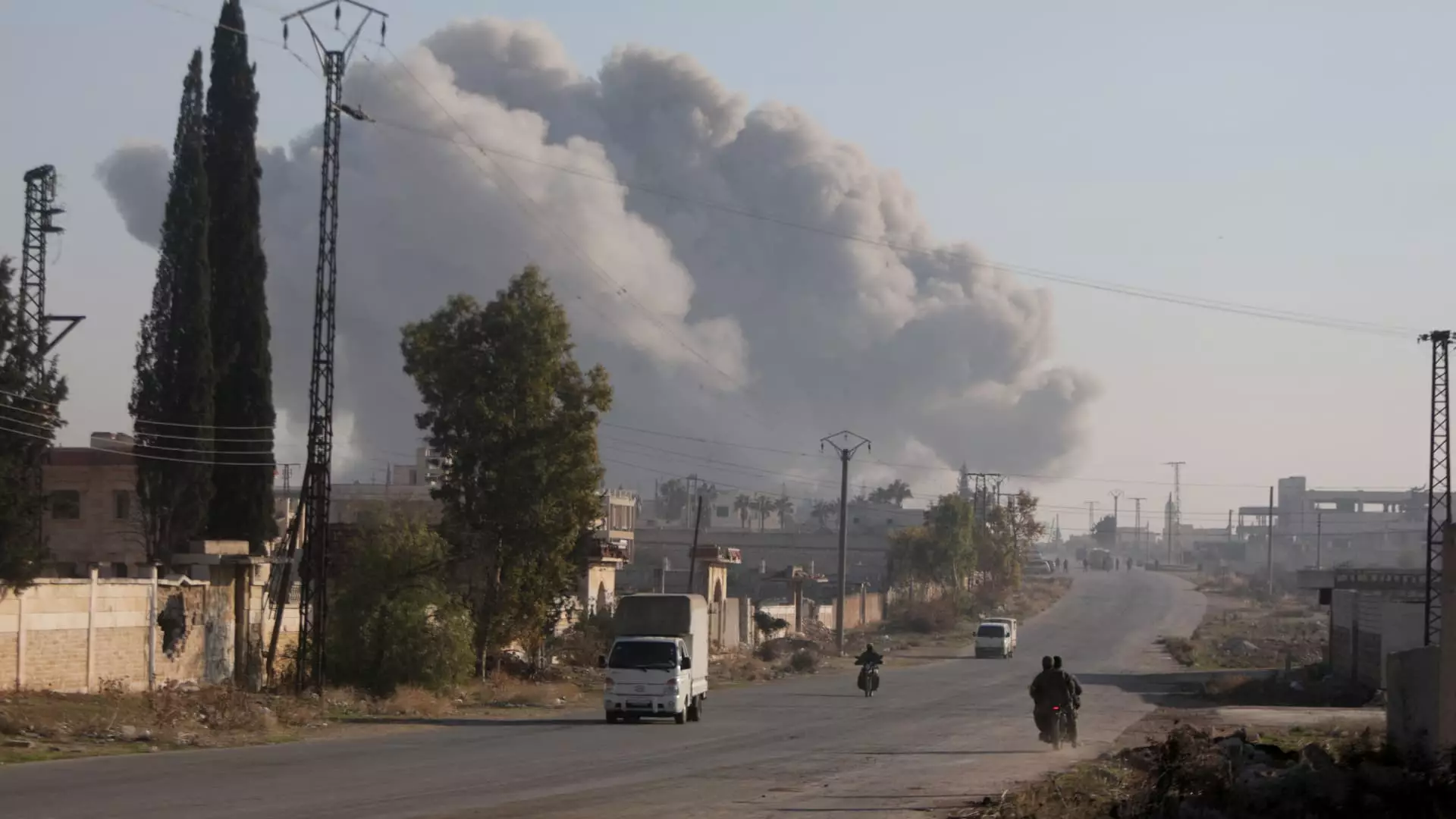The city of Aleppo, once a bustling epicenter of culture and trade in Syria, has once again found itself at the heart of conflict. Recent reports indicate that insurgents have breached the government’s defenses, marking a significant escalation in violence that has not been witnessed since the exit of opposition forces from the city in 2016. The ongoing war in Syria, which has entered its twelfth year, remains intensely complex, with shifting alliances and new battles emerging as old ones linger.
On a seemingly ordinary Friday, Aleppo experienced an unprecedented clash between government forces and insurgents, a development that sent shockwaves through the region. Witnesses described a frantic scene as residents fled neighborhoods, amidst the sounds of missiles and gunfire. This sudden burst of violence can be traced back to a larger offensive initiated by insurgents earlier in the week. Documented by the Syrian Observatory for Human Rights, the conflict claimed the lives of dozens of fighters from both sides, indicative of the brutal nature of war that has persisted since the eruption of civil unrest in 2011.
This resurgence of fighting points to the mounting frustration among opposition factions, spearheaded by the Hayat Tahrir al-Sham (HTS) group, as they attempt to reclaim a foothold in a region long dominated by government control. Dareen Khalifa, an expert on Syrian affairs, highlighted that the rapidity of the insurgents’ advance came as a surprise to many analysts, revealing the apparent fragility of the Assad regime’s defenses.
Aleppo’s renewed violence occurs against the backdrop of ongoing conflicts in neighboring regions, notably Gaza and Lebanon, where tensions involving Hezbollah and the Israeli military have reached a boiling point. Following a two-month war with Israel, Hezbollah’s focus is notably split, potentially creating opportunities for insurgent factions to act while government forces remain distracted. With Russia’s attention drawn away due to its military endeavors in Ukraine, the regime in Syria appears increasingly vulnerable.
As this chaos unfolds, there are fears that any loss of control by Syrian government forces could lead to a domino effect, destabilizing not only Syria but also the broader Middle Eastern region. Experts have raised concerns that the situation could mark a turning point in Syria’s war—a conflict that has been largely stalemated for years, with uneasy ceasefires established between various factions yet often broken.
Analysts have suggested that the assault on Aleppo serves as a clear signal of the weakening position of the Assad government. Robert Ford, the last U.S. ambassador to Syria, described the state of government troops as being “extremely weak.” In light of the insurgents’ offensive, there are questions about the regime’s ability to maintain control over its territories and the effectiveness of their military forces. Statements from the Syrian armed forces acknowledged the ongoing clashes while asserting their efforts to repel the insurgent offensives.
Syria’s inability to stabilize its internal regions allows external players, such as Turkey and the United States, to exert their influence in the ongoing conflict. The support offered to various factions often complicates the battlefield dynamics, creating a mosaic of conflicting interests that further entrenches divisions within the country.
As Turkish officials speculated that the insurgents had planned for a limited offensive before it escalated, the role of foreign powers becomes increasingly significant. The Turkish military presence in Syria has waxed and waned over the years, serving both as a supporter of opposition groups and as a stabilizing force in regions adjacent to their borders. However, with the Syrian government’s capacity further diminished, questions arise about Turkey’s objectives in a landscape that seems to shift unpredictably.
Moreover, Russia has reiterated its position regarding the situation, framing the insurgent activity as a violation of Syria’s sovereignty. The Kremlin’s stance emphasizes a continued desire to restore a semblance of order amidst the chaos, while also preserving its own strategic interests in the region. High-level diplomatic exchanges between Iran and Turkey underscore that the struggle for power in Syria is a multifaceted conflict, drawing in regional and global actors whose interests often collide.
Concluding Thoughts: The Unfolding Story of Aleppo
As Aleppo braces itself for ongoing conflict, the recent resurgence of violence raises critical questions about the trajectory of Syria’s war and the implications for the wider region. The situation is a vivid reminder that the reality of conflict is not static; rather, it evolves with the shifting allegiances and calculations of both local and international players.
The road ahead for Aleppo and Syria at large remains uncertain. Yet, one thing is evident: the complexities and challenges inherent in this war—along with the human toll it exacts—continue to reverberate far beyond its borders, demanding vigilant observation from the international community. The next chapters in Syria’s turbulent narrative will be as unpredictable as they are consequential.

